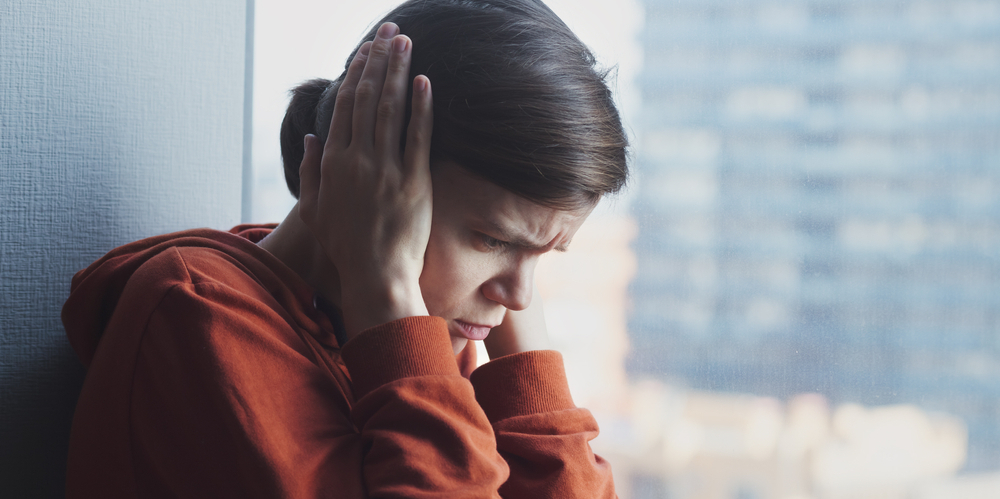What support do girls on the spectrum need in school?
Posted on 10th September 2022 at 14:56
"I feel autistic women are more likely to be described as ‘anxious’ and an autism diagnosis overlooked, since it can challenge gender stereotypes."
Dr Camilla Pang
There has been widespread discussion about autistic girls and women who are now being diagnosed later in life due to the bias in diagnostic tools that have been identified in the assessment process of autism. This is true of many adolescent girls who, as well as negotiating the normal changes that take place at this stage of development, often have to come to terms with a diagnosis and learn to understand what that means for them. Due to the way that girls tend to mask their autistic traits, they are also at higher risk of developing mental health conditions. It is important, therefore, that as well as recognising the different ways in which autism presents in girls and women, we look at how to support them in education, the workplace and other areas of life.
How effectively do schools support girls with autism?
The following is an extract from a parent who has struggled to get the support they need for their daughter in school:
“The battle continues…
So it’s Friday and we’ve heard nothing about when A’s exams will be. We know it’s supposed to be next week, but what days and times we’ve heard nothing. We are supposed to get advanced warning, this was agreed of course.
I ask the question in an email and was told that it had been emailed to all children on Monday. I ask why was I not made aware as agreed and why had the TA not gone through A’s emails? Excuses..
Turns out the timetable means A will have to go in for 4 full days that week. A hasn’t managed a full week at school since December 2021 it’s now June, she barely manages a whole day.
I suggest she only comes in for the exams, I’m told she will miss so much science and it’s a concern! I’ve been saying this since January and it’s finally become a concern??
Neurodivergent children miss so much learning due to the environment being inappropriate for their needs, yet schools seem to be able to do this, someone needs to hold them accountable, it just cannot continue. The impact on mental health is immeasurable."
At Y:AMHS, we hear from many parents whose teenage girls struggle to access the school environment, or who push themselves to go in to the detriment of their mental health. So, what is it that schools could do to help our youngsters and, given the budgetary pressures, how easy would it be for them to offer this support?
“ Autistic girls are particularly vulnerable to mental health difficulties if not appropriately supported and the percentage of these ASC girls in inpatient units is disproportionately high” (assessing psychologist)
What difficulties do autistic girls experience?
Autism in girls can look different to the sterotypical ideas we might have around autism - often, they appear to be able to socialise well, do not demonstrate stimming behaviours such as hand flapping in the same way and can mask their sensory difficulties.
However, beneath this presentation, girls may be experiencing some of these difficulties:
Social interaction
Girls tend to be aware of the need to socially interact and will want to make friends. However, they may find it difficult to know how to make friends, and are often passive in their social interactions, allowing others to lead and mimicking their responses. They may also find it difficult to read others' facial expressions and may be surprised by others' responses in social situations. Often, they do not understand social 'rules', which often become more complex in adolescence, around the time when young people are transitioning to secondary schools. Girls with autism may therefore feel isolated or alone, and struggle to experience a sense of belonging. One young person described this as "being in a bubble, being with others but also on the outside."
Imagination
It is somewhat mythical that people with autism - both boys and girls - are unimaginative. Girls often have great imaginations, and are able to create imaginary worlds in play and story that are often very detailed and which they can sustain - their imaginary worlds can often provide them with a safe place.
Girls on the spectrum will also often have 'special interests', such as animals, books or music bands. Such interests are not unusual for young people to have, but for girls on the spectrum, it is the intensity of the interest which is different and which may stand out as unusual to their peers.
Sensory difficulties
Girls (and boys) on the autistic spectrum will often experience greater than usual sensitivity to things such as bright lights, noise and textures. This may result in them finding busy and noisy spaces uncomfortable, and being sensitive to the clothing they wear. This has particular significance in schools where, particuarly in secondary schools, young people will face busy corridors at breaktimes and will be expected to wear uniforms which they may find extremely uncomfortable.
Anxiety
The world of a young person with autism can feel extremely unpredictable. Their lack of understanding of social rules leaves them often feeling bewildered by others' responses or not sure what to expect and they may not fully pick up on what is being said if communication has not been explicit. This often translates into a high level of anxiety. Additionally, girls on the spectrum often experience what is known as 'social anxiety' whereby they are not sure what to say or how to respond and find social interactions therefore extremely anxiety- inducing and demanding.
All of these difficulties can lead to the pressure building up in a young person as they try to navigate their world as best they can and try to 'fit in'. This sadly often leads to young people on the spectrum experiencing a greater level than their peers of mental ill health and what is now termed 'emotionally-based school avoidance (EBSA).'

So, how can schools best support autistic girls?
Anxiety
If anxiety is being produced by the amount of unpredictability experienced, then reducing this unpredictability is key to reducing the stress load of girls with autism. Knowing what to expect and what is expected is essential and this can be achieved with clear communication. Don't assume that instructions have been understood - check in. Girls with autism very often do not like to stand out and, given their difficulties around social interactions, may not ask if they don't understand. Having written or pictorial instructions and timetables can be helpful, too. Additionally, it is important to try not to give too many instructions in one go.
Another key essential is that young people are aware of the exact arrangements when the school day will be different - such as when there are exams - and have time to prepare themselves. Knowing where they need to go and when is extremely important and this information should be clearly communicated visually and orally and understanding should be checked.
Having clear structure to lessons is also important - girls on the spectrum will often find it difficult to be in a class where there is 'free' time or a wide choice of activities. Limiting choices and setting out what is expected is important for reducing anxiety and stress for autistic girls.
Girls on the spectrum may find themselves feeling overwhelmed at times, particularly if the classroom is noisy or bright. Having a 'time out' card that they can show a teacher to excuse them from a lesson without having to explain can be helpful. They should have a quiet and safe place in school where they can go to calm down.
Social Interactions
Having some structure around social interactions can also be helpful. This may be in the form of having specific lunch time or break time 'clubs' which are supervised and which have a certain focus. Young people may need additional support in learning how to initiate conversations and respond to others. There are various games and activities that can support this, and which could be offered to small groups of children and young people or individuals. Additionally, having a quiet place to go during break times to get some 'alone' time can be important - being around people all day can feel exhausting for girls with autism and they may need a break from social demands to be able to get through the day.
Sensory difficulties
Young people who experience sensory difficulties may find it helpful to be able to wear earphones when they are in busy and noisy spaces. It may also be helpful to think about the lighting of rooms and whether lighting can be adjusted to make the environment more comfortable - for example, blinds may be used on bright days, and the brightness of interactive screens could be considered. Schools may be able to provide some flexibility in the wearing of school uniform - for example, a young person may choose to wear a skirt or trousers the same colour as the uniform but which they find more comfortable.
Many of the support measures highlighted here are unlikely to require any additional funding. What they do require is that teachers be aware of each of the children and young people in their class and their needs. In a secondary school setting, this can of course be a big ask. However, many of these measures can be universally applied and are likely to be of benefit to all children and young people and support their learning and development. The SEND Code of Practice (2014) states that "High quality teaching that is differentiated and personalised will meet the individual needs of the majority of children and young people."
The level of support needed by girls on the spectrum will differ case-by-case - autistic people are not all the same, just as non-autistic people are all different. The significance of the parent-teacher relationship cannot therefore, be understated and working together with the young person to ascertain how they can be best supported is key. However, there are some basic principles which can guide the support given in schools to those - particularly girls, but also boys - who are on the autistic spectrum, which may help them feel able to access the school environment without becoming overwhelmed and reducing their risk of serious mental ill health. In addition, many of these principles can be applied universally, benefitting entire cohorts and supporting better outcomes for all.
At Y:AMHS we believe that children and young people should be able to access mental health treatment when they need it, as soon as they need it. We provide funding for children and young people aged 10-18 in the Crawley area to pay for a range of treatments, such as counselling, art or animal assisted therapies. We invite families to specify a provider or support them to find a suitable therapist, which we then fund. Applications are invited from families on a quarterly basis, with our next round opening on 1st October. Find out more here or email us at info@yamhs.co.uk .
Share this post:








